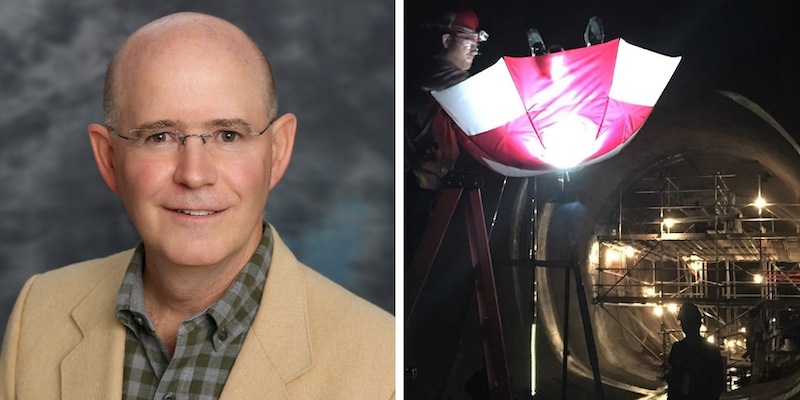COVID-19 research: Dr. Lloyd Waugh
Author: UNB Research
Posted on Sep 1, 2020

Around the world, researchers across all fields and disciplines are working to address the challenges, issues and implications of the 2019 novel coronavirus pandemic. Here at UNB, our own research community is part of that global movement.
Last month, we announced 13 new, funded COVID-19 research projects; here’s a little more about the expertise, the passion and the capacity behind one of them. Want to read the others? Find the full list of stories here.
Dr. Lloyd Waugh (Civil Engineering, Fredericton)
Dr. Lloyd Waugh, working with Cody Bradley (Bradley Engineering), is researching the use of virtual reality and 3D modelling to minimize the spread of viruses on construction sites.
Who are you?
I received my BSc in Civil Engineering from UNB in 1979. Other than working at a construction company for three years and obtaining three degrees from Stanford, I have worked at UNB since. My primary area of research explores the use of information technologies to improve the construction industry.
Cody Bradley, my industry partner for our COVID-19 project, has acquired a broad understanding of business, has worked as a videographer and civil engineering consultant, and has received two Civil Engineering degrees from UNB, a bachelor of science in engineering in 2014, and a master of science in engineering in 2018. I was his research supervisor for his thesis, which explored using photogrammetry (a process of using cameras to create maps or 3D objects) and other imaging technology to model the Grand Falls Generating Station Intake Tunnel. In 2018 he established Bradley Engineering Ltd. in Fredericton.
What are you working on?
In recent years, my research has looked for faster and better ways of documenting actual infrastructure, such as buildings and roads. Initially this was in the form of virtual reality panoramas. With Cody’s help, we improved the use of photography and image processing, and added web-based means of delivering bi-weekly updates to infrastructure owners during the construction phase of their construction project.
Our COVID-19 project focuses on using these technologies to minimize the number of site visits needed during construction projects. Personnel from general contractors, subcontractors, designers and inspection agencies often visit multiple construction project sites in one day. This not only exposes them to COVID-19 if there is an unrecognized outbreak at one of these sites, but also creates potential that they quickly spread the virus to multiple construction sites.
This summer, with the help of recent graduate Allison Boyd, we are working with Bird Construction Ltd. to identify specific scenarios in which we can provide construction project personnel with the information they need via a website (VRdocumentation.ca) and thereby minimize site visits. In addition to this, Allison will be investigating the use of mini-drones to photograph infrastructure and produce 3D models as described below.
Why did you decide to work on this research?
I had three goals in mind when contemplating this research: minimizing the exposure of construction project personnel to COVID-19 in this and future pandemics, employing UNB students who might not otherwise have a job due to the pandemic, and furthering my collaboration with Bradley Engineering Ltd.
By accomplishing these goals, we also have potential to create other positive impacts: using remote and imaging technologies to replace site visits leads to decreasing greenhouse gas emissions, saving personnel time, reducing travel costs and providing opportunities to engage experts from around the world, to name a few.
Furthermore, Bradley Engineering’s use of photogrammetry to quickly create 3D models of massive infrastructure with millimeter resolution is a promising example of industry and academic collaboration. It has been possible to create 3D models of actual infrastructure for some time; the challenge has been to do it quickly, inexpensively and accurately. An outcome of this research is the ability to routinely compare successive models of actual infrastructure to precisely identify differences. Over time these comparisons can be used to predict infrastructure risks and failures.
More information:
Dr. Lloyd Waugh | Civil Engineering
Research at UNB | Graduate Studies at UNB | Postdoctoral fellowships
Related Pages: COVID19 Research Stories